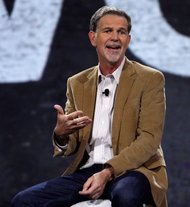The music industry is used to bad news. When the International Federation of the Phonographic Industry announced that record sales in 2012 had their first yearly uptick since 1999, for example, there was jubilation in the record business — even though the gain was only 0.3 percent.
One area that has been growing consistently, however, are the royalties from performing rights organizations like Broadcast Music Inc. and the American Society of Composers, Authors and Publishers, which pay songwriters and music publishers when their music is broadcast, performed live or streamed online.
BMI, as Broadcast Music is known, will announce on Monday that it had $944 million in revenue for the year that ended in June. That is 5 percent more than it collected the year before, and a new high for the organization, whose 600,000 members include stars like Taylor Swift, Pink and Adam Levine of the band Maroon 5. BMI paid $814 million in royalties, the first time its annual distributions have exceeded $800 million. Since 2003, BMI’s revenue has increased about 50 percent.
The performing rights societies are some of the industry’s oldest financial engines, and they are trying to adapt to a digitized business that has spread far beyond radio and broadcast television, their bread and butter for decades.
BMI, which was founded in 1939, collected $57 million in its most recent year from digital services, which include not only Pandora and Spotify but also Hulu, Netflix and other online outlets. As recently as 2009, such services represented just 2 percent of BMI’s domestic revenue, but in its latest fiscal year they were 9 percent.
BMI’s “general licensing” category, which includes live performances as well as the music played in restaurants and other businesses, brought in $116 million, and $297 million more came from international sources. Michael O’Neill, who took over as BMI’s chief executive this month, said the organization had become leaner through staff reductions and by building a more efficient digital infrastructure to track billions of performances of its songs.
Founded in 1914, the American Society of Composers, Authors and Publishers, or Ascap, reported in March that it had $942 million in revenue for 2012, down 4.2 percent. For the year that ended in June 2012, BMI’s revenue also fell by about 3.5 percent, to $899 million. In those periods, both organizations — which are nonprofits regulated by federal consent decrees — were hit by a royalty renegotiation with radio broadcasters.
Even as the performing rights organizations have tried to adapt and streamline their operations for the digital age, their future has been cast into doubt. In recent years, some of biggest publishers have withdrawn digital rights to their catalogs from the performing rights organizations, in an effort to control the royalty rates paid by online services like Pandora.
But last week, a federal judge in a case between Ascap and Pandora ruled that publishers could not keep some rights within Ascap but withhold others. That decision did not directly affect BMI. But it raised concerns that the societies — already threatened by the trend of rights withdrawal by publishers — could be in even greater danger if they are seen as standing in the way of publishers getting the highest rates they can.
“This was the year we were declared dead by some,” said Richard Conlon, a senior vice president at BMI, “and we just hit a 74-year high in revenue.”

Article source: http://www.nytimes.com/2013/09/23/business/media/collectors-of-royalties-for-music-publishers-may-see-better-results.html?partner=rss&emc=rss





